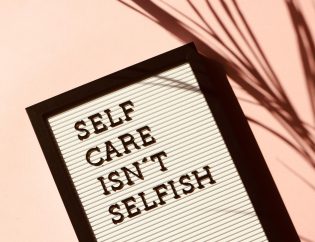
Post-Traumatic Stress Disorder (PTSD) is a mental health condition that develops after an individual experiences or witnesses a traumatic event where someone’s life is threatened or severe injury has occurred. These traumatic events may include war, a natural disaster, sexual assault, physical abuse, or a terrible accident. People living with post-traumatic stress disorder may experience intense, disturbing thoughts even when they are not in present danger.
June is National PTSD Awareness Month. This initiative aims to raise awareness about what PTSD is, what causes it, and its effective treatment options.
Understanding PTSD and raising awareness about it is crucial for providing proper support and treatment to those affected. Increased awareness helps reduce stigma, encourages individuals to seek help, and promotes empathy and understanding in communities, ultimately leading to better mental health outcomes for everyone.
Keep reading our blog, where we dive into the symptoms of PTSD, causes and risk factors, how it can affect your daily life, treatment options, and more.
Exploring Trauma
It is normal to experience upsetting flashbacks, anxiety, or have trouble sleeping after a traumatic event. Going to work, school, or spending time with loved ones can feel difficult right after trauma. But most people start to feel better after a few weeks. However, if it’s been longer than a month and thoughts and feelings from the trauma are still making daily activities hard, you may have PTSD.
Big T Trauma and Small t trauma
Trauma can profoundly impact an individual's mental, emotional, and physical well-being, often leaving lasting scars that are not always visible. It is important to note that overtly distressing events like war or sexual assault are not the only events classified as trauma. War, combat, natural disasters, physical or sexual abuse, terrorism, and terrible accidents are what we consider to be the “Big T” events. “Small t” traumas are events that aren’t inherently life-threatening but still feel disturbing or distressing personally. Small t trauma can include:
- Interpersonal conflict
- Infidelity
- Divorce
- Abrupt or extended relocation
- Legal trouble
- Financial worries
Trauma of Omission
Trauma can also be what didn’t happen to you. This is called trauma of omission.
Trauma of omission refers to the psychological and emotional impact that results from the absence of necessary experiences, care, or attention during critical developmental periods, particularly in childhood. This can include neglect, emotional unavailability, lack of affection, or failure to meet basic needs.
Unlike trauma caused by active harm or abuse, trauma of omission stems from what did not happen—such as the absence of nurturing relationships or positive reinforcement—leading to feelings of inadequacy, abandonment, or emotional deprivation.
Post-traumatic Stress Disorder Symptoms
Symptoms of PTSD may last months to years. Symptoms can significantly impact an individual’s daily life and can include:
- Flashbacks, or feeling like the event is happening again
- Trouble sleeping or nightmares
- Feeling alone or detached from others
- Losing interest in activities
- Having angry outbursts or other extreme reactions
- Feeling worried, guilty, or sad
- Frightening thoughts
- Having trouble concentrating
- Having physical pain like headaches or stomach aches
- Problems remembering
- Avoiding things that remind you of the traumatic event, like large crowds or driving
- Negative beliefs about themselves or others
- Irritability
- Feeling very vigilant
- Startling easily
About 80% of people who have PTSD also have one or more additional mental health diagnoses like depression, anxiety, or substance abuse. They are also at risk for functional impairments, reduced quality of life, physical health problems, and relationship problems.
Post-traumatic Stress Disorder Risk Factors
Anyone at any age can develop PTSD. Some factors can increase the chance that someone will have PTSD, many of which are not under that person's control. For example, PTSD is more common after certain types of trauma like combat and sexual assault. Other risk factors include:
- Prolonged exposure to trauma or experiencing multiple traumatic events
- Previous traumatic experiences, especially during childhood
- Personal or family history of mental health issues such as anxiety or depression
- Women are generally more likely to develop PTSD than men
- Being younger at the time of trauma can increase your risk
- The absence of a strong support network of family and friends
- Lack of access to mental health services
- Low socioeconomic status, which can increase stress and limit access to resources
- Experiencing high levels of stress daily, such as financial troubles or relationship problems
- Substance abuse
Understanding these risk factors can help in identifying individuals who might be more susceptible to developing PTSD and in providing timely support and interventions.
Diagnosing Post-traumatic Stress Disorder
PTSD is most often diagnosed or confirmed by a mental health provider. Diagnosing PTSD typically involves a combination of a clinical evaluation, reviewing patient history, and using specific diagnostic criteria.
When trying to diagnose PTSD, the mental health provider will use the diagnostic criteria outlined in the Diagnostic and Statistical Manual of Mental Disorders (DSM-5) published by the American Psychiatric Association. According to the DSM-5, the PTSD criteria include:
- Exposure to Trauma (one required): The individual must have been exposed to actual or threatened death, serious injury, or sexual violence in the following ways:
- Direct exposure
- Witnessing the trauma
- Learning that the trauma happened to a close relative or friend
- Indirect exposure to aversive details of the trauma, usually in the course of professional duties like first responders and medics
- Intrusive Symptoms (one required): The traumatic event is persistently re-experienced in the following ways:
- Unwanted upsetting memories
- Nightmares
- Flashbacks
- Emotional distress after exposure to traumatic reminders
- Physical reactivity after exposure to traumatic reminders
- Avoidance (one required): Avoidance of trauma-related stimuli after the trauma in the following ways:
- Trauma-related thoughts or feelings
- Trauma-related reminders
- Negative Alterations in Cognitions and Mood (two required): Negative thoughts or feelings that began or worsened after the trauma in the following ways:
- Inability to recall key features of the trauma
- Overly negative thoughts and assumptions about oneself or the world
- Exaggerated blame of self or others for causing the trauma
- Negative affect
- Decreased interest in activities
- Feeling isolated
- Difficulty experiencing positive affect
- Arousal and Reactivity (two required): Trauma-related arousal and reactivity that began or worsened after the trauma in the following ways:
- Irritability or aggression
- Risky or destructive behavior
- Hypervigilance
- Heightened startle reaction
- Difficulty concentrating
- Difficulty sleeping
- Duration (required): Symptoms last more than one month.
- Functional Impairment (required): Symptoms create distress or functional impairment.
- Exclusion (required): Symptoms are not due to medication, substance use, or other illnesses.
Early diagnosis and intervention are crucial for effectively managing PTSD. Every day is a battle you don’t have to fight alone. If you’re struggling with PTSD, reaching out for help can be the first step toward healing. You’re not weak for asking; you’re strong for surviving.
Post-traumatic Stress Disorder Treatment Options
PTSD can feel like an unending nightmare, with those affected reliving their trauma through flashbacks, nightmares, and severe anxiety. However, there is hope. Numerous treatment options have proven effective in helping individuals manage and overcome the debilitating symptoms of PTSD. Understanding these options can empower those affected to take the first step toward recovery and reclaim their lives.
Psychotherapy
Psychotherapy, or talk therapy, is a cornerstone of PTSD treatment. Cognitive behavioral therapy (CBT) is particularly effective, focusing on understanding and changing the thought patterns contributing to distressing feelings and behaviors. Within CBT, Prolonged Exposure Therapy (PE) helps individuals gradually confront trauma-related memories, feelings, and situations that they have been avoiding. Another form, Cognitive Processing Therapy (CPT), involves learning to reframe negative thoughts about the trauma. Eye Movement Desensitization and Reprocessing (EMDR) is another innovative therapy that uses guided eye movements to help individuals process and integrate traumatic memories more effectively.
Medication
Medications can be an essential part of PTSD treatment, particularly for those experiencing severe symptoms. Medications can help balance the neurotransmitters in the brain, reducing symptoms like mood swings, irritability, and sleep disturbances. For some, other medications targeting specific symptoms, like nightmares, may be recommended. Working closely with a healthcare provider to find the right medication and dosage is important, as individual responses can vary.
Complementary and Alternative Therapies
Many individuals find relief through complementary and alternative therapies. Acupuncture, for example, has shown promise in reducing anxiety and improving sleep. Animal-assisted therapy, such as spending time with service dogs, can provide emotional support and relieve symptoms of PTSD. Art and music therapy offer creative outlets for expressing and processing traumatic experiences. These therapies can be used alongside traditional treatments to enhance overall effectiveness and provide a more holistic approach to recovery.
Self-Care and Support Systems
In addition to professional treatment, self-care practices and strong support systems play a critical role in managing PTSD. Regular physical activity, a healthy diet, and sufficient sleep can significantly impact overall well-being. Mindfulness practices, such as meditation and yoga, can help ground individuals in the present moment and reduce symptoms of hyperarousal and anxiety. Peer support groups provide an invaluable sense of community and understanding. Sharing experiences with others who have faced similar challenges can reduce feelings of isolation and provide practical coping strategies.
The journey to healing from PTSD begins with the courageous step of seeking help. Recognizing the need for professional support is not a sign of weakness but a testament to one’s strength and desire for a better life.
Understanding and exploring these treatment options can bring hope and reassurance that PTSD is manageable. With the right support and resources, individuals can reclaim their lives, reconnect with loved ones, and build a future free from the shadows of their past trauma.
Twin Branch Wellness & Recovery for Women
If you struggle with substance abuse because of PTSD or not, we are here to help.
Our high-intensity residential addiction treatment program will not be easy, but it will be worth it. Surrounded by the comforts of a loving home-like environment and all women, our compassionate and professional care team welcomes the opportunity to work with you. Our treatment team of dedicated professionals ensures your needs are carefully considered throughout your treatment.
Twin Branch is designed for adult women ready to change their lives. It was created by women for women in search of recovery, trauma resolution, and a healthy path for the future.
 Women face unique issues when it comes to substance use disorder. These differences are influenced by our biological makeup and by culturally defined roles. Our women-specific curriculum at Twin Branch caters to a woman’s specific physical, emotional, social, and psychological needs that have proven to help women heal and recover. Women-only treatment at Twin Branch is tailored for long-term success.
Women face unique issues when it comes to substance use disorder. These differences are influenced by our biological makeup and by culturally defined roles. Our women-specific curriculum at Twin Branch caters to a woman’s specific physical, emotional, social, and psychological needs that have proven to help women heal and recover. Women-only treatment at Twin Branch is tailored for long-term success.
Are you ready to start a new chapter? Are you ready to live a healthier and more fulfilling life? If you or someone you love are struggling with substance abuse, Twin Branch Wellness & Recovery for Women is here to help you begin your recovery journey. It is never too late or too soon to choose wellness and develop the tools necessary to manage life's demands.










